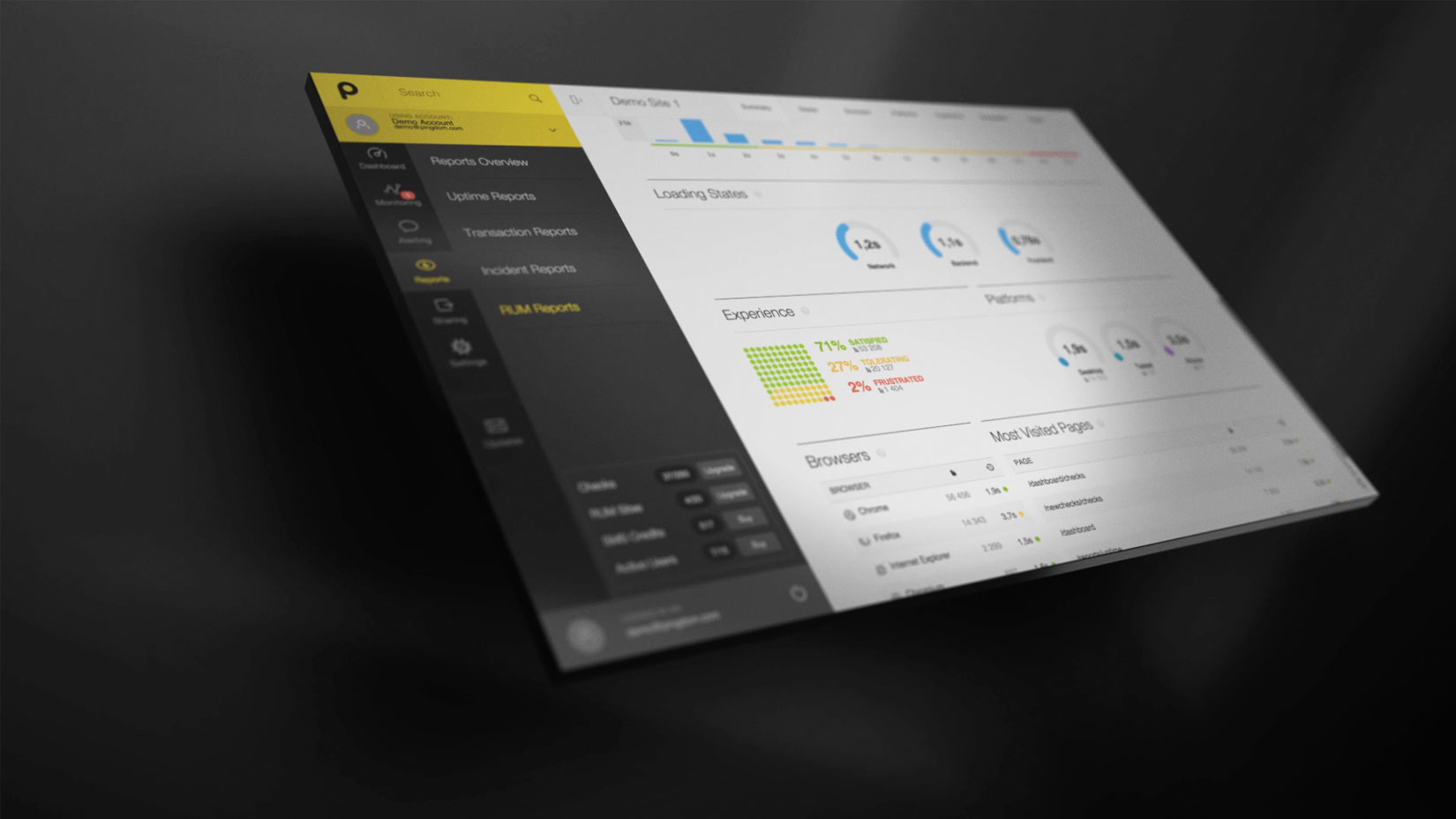With a little piece of code, you can do big things
With Pingdom, you can monitor your entire infrastructure – everything from your email server to your content delivery networks. And using Pingdom’s custom checks, you can look for content changes on any website.
A HTTP custom check hits a predefined endpoint that can execute scripts to determine the status of your site. It’s a kind of universal check type that you can customize as you wish on your end, a type of monitoring that store a value and a status of your choosing, based on a script on your servers.
Your imagination is the limit
Get the ability to call your own scripts on the server and set your own status report. This allows more comprehensive checks that go beyond a simple ping.
Let’s say you’re interested in the latest release from Apple. You can automatically detect content changes on the release page and immediately get alerted. If you’re looking to buy something that’s out of stock, you can search for a keyword (out of stock in this case) and see when that item becomes available. And if you’re bidding on Ebay, you could use Pingdom’s custom check to alert you when a new bid comes in. You can even monitor your broadband connection at home (so if you’re service provider claims you have 100% uptime, you can hold them to their word).
Custom checks can be used to monitor
- New feature releases
- Out of stock items
- Online bidding
- Tickets for sale
- Broadband connection
- Custom status page
- The amount of free RAM or HD space on your server
- The CPU load on your server
- The number of active connections to your web server

Nothing stops you from performing more advanced tasks than the ones mentioned above. The imagination is the limit. Let’s say you have a proprietary server that is using some binary protocol to communicate. Then there might not be a default check that is usable. In which case, a middle server or process can be used to generate XML data that can be read by Pingdom’s custom check.
And what if the server you want to monitor is hidden behind a strict firewall only allowing access from a set of specific IP addresses? You can set up a server or process on one of those IP addresses to monitor and generate an XML file.
If you have a server that is not accessible to the public Internet but critical to your company’s operations, you can set up a server that is reachable by the public Internet and has access to your internal server to ping the internal server and report that data in a XML-form.
Since you’re returning a value and a status every time your XML page is accessed (for example once a minute), you will be able to see this data in the graphs in the Pingdom control panel and of course be sent alerts just as with any other Pingdom check.
Automate your workflow
The Pingdom API is a way for you to automate your interaction with the Pingdom system. You can create your own scripts or applications with most of the functionality you can find inside the Pingdom control panel.
If you are building a web page using the Pingdom API, we recommend that you do all API request on the server side. In general, whenever you can cache data, do so. If you get any substantial traffic, you do not want to call the API each time you get a page hit, since this may cause you to hit the request limit faster than expected. And if you decide to create a really elaborate, time-consuming script on your end, you may be best off letting it run separately and just have it continuously update a status page (the XML file) that is accessed by Pingdom. If the server your script runs on (or rather the XML file) is unreachable for some reason, this will also count as a “down” on Pingdom’s end, so make sure your script runs on a reliable server with a good Internet connection.
Rutger Laurman/lekkerduidelijk posted this on GitHub, demonstrating how he uses Pingdom’s custom checks.
What do you check?
Perhaps you have something sweet going on that can make you win a new MacBook in Pingdom’s ongoing contest? Share your experiences below. And go ahead! Take full advantage of the Pingdom API and build something seriously cool.
























